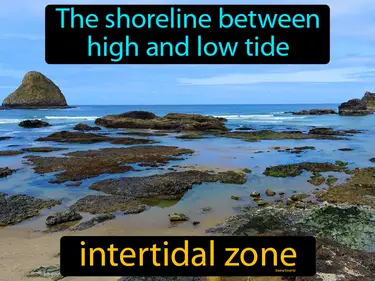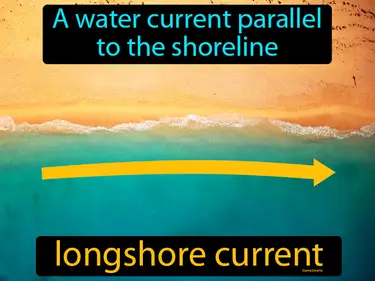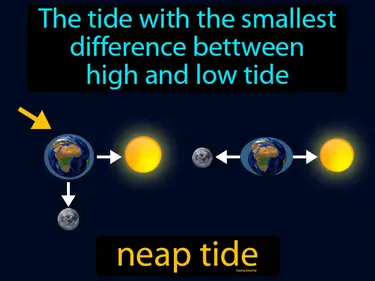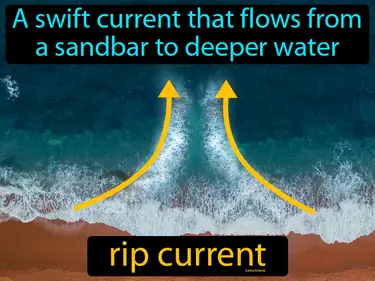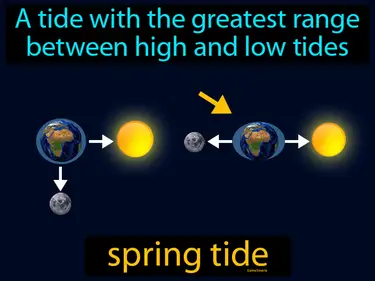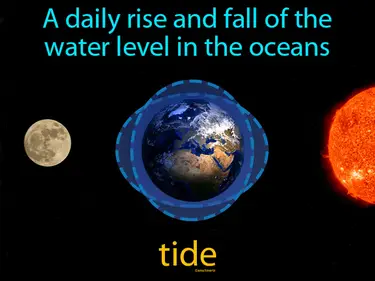A Time for Tides
Science
high-intertidal zone
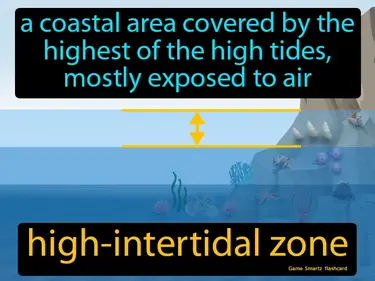
A coastal area covered by the highest of the high tides, mostly exposed to air. high-intertidal zone. The high-intertidal zone is the part of the shore that gets covered by the sea only during the highest tides.
low-intertidal zone
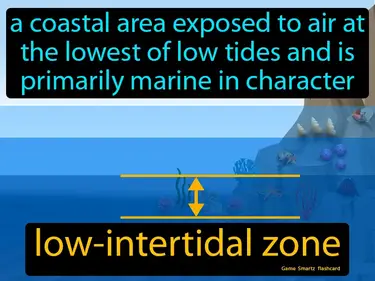
A coastal area exposed to air at the lowest of low tides and is primarily marine in character. Low-intertidal zone. This zone is where the ocean meets the land and is mostly underwater, but it's exposed to air during the very lowest tides.
mid-intertidal zone
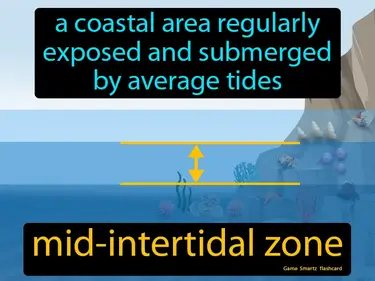
A coastal area regularly exposed and submerged by average tides. Mid-intertidal zone. The mid-intertidal zone is where the ocean meets the land and is covered by water only part of the time due to the tides.
mudflats
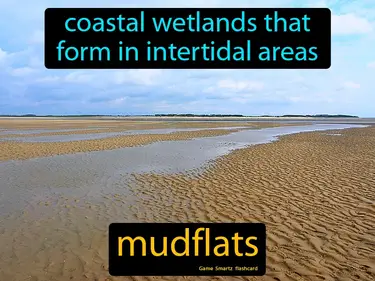
Coastal wetlands that form in intertidal areas. Mudflats. Mudflats are flat, muddy areas that form because of the deposits of silt and clay in coastal regions, often exposed during low tide.
splash zone
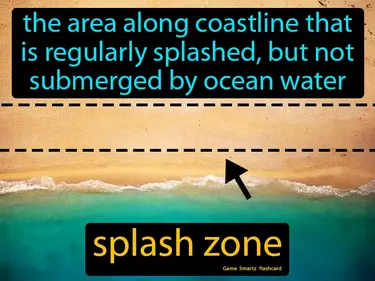
The area along coastline that is regularly splashed, but not submerged by ocean water. Splash zone. The splash zone is the part of the shore where ocean water frequently hits but doesn't stay underwater.
surf zone
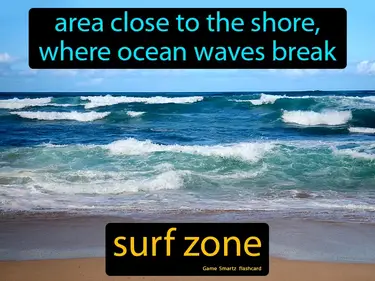
Area close to the shore, where ocean waves break. Surf zone. The surf zone is where ocean waves crash and foam as they reach the beach.
tidal bore

A wave formed by an incoming tide funnelling into a river or narrow bay. Tidal bore. A tidal bore is a large wave that travels up a river or bay as the tide rises, pushing water upstream.
tidal range
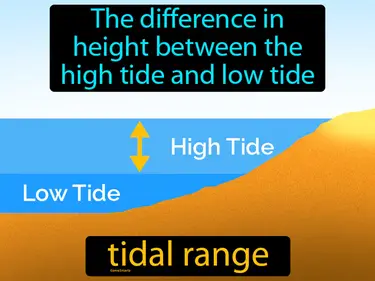
The difference in height between the high tide and low tide. Tidal range. Tidal range is the vertical difference between the ocean's surface at high tide and low tide.


